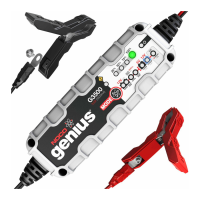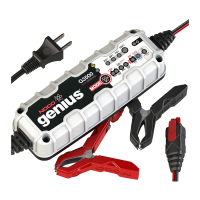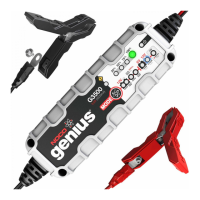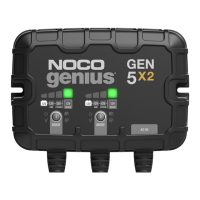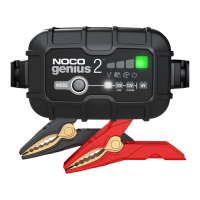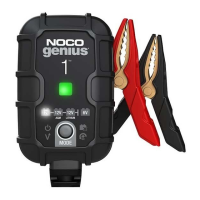BATIERIES MAY BE UNSTABLE AND
UNSUITABLE
FOR
CHARGING.
Using 12V Repair. [Press &
Hold]
12V Repair is an advanced
battery recovery mode for
repairing and storing, old, idle, damaged, stratified
or
sulfated batteries.
Not
all
batteries can be recovered.
Batteries tend
to
become damaged if kept at a low
charge and/or never given the opportunity to receive
a
full
charge. The most common battery
problems
are battery
sulfation and stratification. Both battery
sulfation and stratification
will artificially
raise the open
circuit voltage
of
the battery, causing the battery to
appear
fully charged, while providing low capacity. Use
12V Repair
in
attempt
to
reverse these problems. For
optimal results, take the 12-volt
battery
through a
full
charge cycle,
bringing the
battery
to
full
charge, before
using this mode. 12V Repair can take
up
to
four
(4)
hours to complete the recovery process and
will return
to
Standby
when completed.
CAUTION.
USE THIS MODE WITH
CARE.
THIS
MODE
IS
FOR 12-VOLT LEAD-ACID BATIERIES
ONLY.
THIS MODE USES
A
HIGH CHARGING VOLTAGE
AND MAY CAUSE SOME
WATER
LOSS
IN
WET
(FLOODED)
CELL
BATIERIES. BE
ADVISED, SOME
BATIERIES
AND
ELECTRONICS
MAY BE
SENSITIVE
TO HIGH CHARGING VOLTAGES. TO MINIMIZE RISKS
TO ELECTRONICS, DISCONNECT
THE BATIERY
BEFORE USING THIS MODE.
Connecting
to
the
Battery.
Do not connect the AC power plug until
all
other
connections are made.
Identify the correct polarity
of
the battery
terminals on the battery. The positive battery
terminal
is
typically
marked by these letters or symbol
(POS,P,+).
The negative
battery
terminal
is
typically
marked by these letters
or
symbol (NEG,N,-). Do not
make any connections to the carburetor, fuel lines,
or
thin, sheet metal parts. The below instructions are for a
negative ground system (most common).
If
your
vehicle
is
a positive ground system
(very
uncommon),
follow
the below instructions
in
reverse order.
4
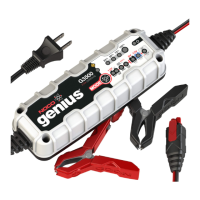
